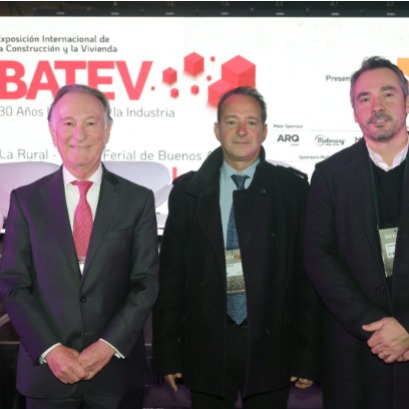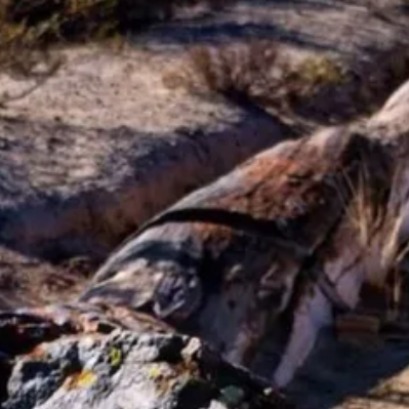
Batev 2025 began: the meeting point for the construction industry
The 30th edition of the International Exhibition of Construction and Housing has been inaugurated today, consolidating as the main event for innovation, industrialized construction, sustainability and technology in the regions construction sector. The exhibition will be open until June 28, 2025, from 2:00 p.m. to 8:00 p.m., in La Rural.
Buenos Aires, June 25, 2025:- With a great call, a new Batev edition began. From the first day, a reunion climate was lived, where the leading brands of the sector presented their latest innovations and trends. At 6:00 p.m. the opening ceremony was held with the traditional tape cut, in which Ing. Gustavo Weiss, president of the Argentine Chamber of Construction (Camarco) participated; Carlos Spina, president of the Association of Entrepreneurs of the Housing of the Argentine Republic Real Estate Developments (AEV) and Gabriel Pascual, President of Fairs and Exhibitions of Argentine Construction (EFCA) .Batev2025 is the impervisable appointment for architects, engineers, builders, entrepreneurs and general public who want to inform, compare and carry out the best businesses in a highly professional area. Also know the trends that are promoting the market, and the most significant challenges that the sector is going through.The corridors of the exhibition were filled and the stands full of activity from the opening to the closure. With the participation of more than 200 exhibitors, which represents an increase with respect to last year, the fair presented more innovative projects, sustainable materials, the most advanced technology and construction systems in more than 12,000 square meters of exposure. In the BateV frame, the Meeting 2025 - CEDU day | AEV, a strategic dialogue space that addressed one of the great debts of the Argentine economic system: the creation of a sustainable market for housing in the Batev Auditorium. In this context Carlos Spina, president of AEV said: It is urgent to move towards a modern, scalable and sustainable model of financing for housing, focused exclusively on the development of new units. It is key from financing stock to finance flow; Use the future income of families and not limit the pre -existing deposits in the system as support. This paradigm change would allow multiplying the volume of credits available and generating immediate economic activity and quality employment. On the other hand, Damián Tabakman, president of CEDU declared: although we face high costs, low profitability and a mortgage loan still limited, I value the process of macroeconomic planning running, key to reactivating the activity. Today there are tools that we did not have - as mortgages and a clearer legal framework for rentals. The developers continue to invest on land; The context demands caution, but there are signs that invite you to think about a recovery.
IT MAY INTEREST YOU
 The second largest wetland in South America is located in Argentina: what is it?
The second largest wetland in South America is located in Argentina: what is it?
Argentina has national parks that place it in a unique position within South America, competing with 300 others. Which is the largest? South America is home to more than 300 national parks, but many go unnoticed. There are extensive wetlands that have been the subject of major ecological restoration projects, to coastal mountains with deep indigenous heritage. Today we tell you the case of one located in Argentina.
 The forest of the oldest shadows: the story of the petrified trees
The forest of the oldest shadows: the story of the petrified trees
One of the natural treasures of Río Negro turns 23 years old under the protection law that allows its conservation. Where it is and how it was formed. Río Negro celebrates 23 years of conservation in the petrified forest as a Protected Natural Area (ANP). It is a space of 625 hectares that protects an exceptional site of fossil trunks that date back more than 60 million years.
 Experts cant believe it, but this tree is the oldest in the world and continues to bear fruit: it is 4,000 years old.
Experts cant believe it, but this tree is the oldest in the world and continues to bear fruit: it is 4,000 years old.
Nature keeps secrets that defy the passage of time, and one of the most surprising examples is a tree that, approximately 4,000 years old, continues to bear fruit today. This specimen has become a symbol of resistance and longevity, capable of surviving climate changes, landscape transformations and human activity itself.





















